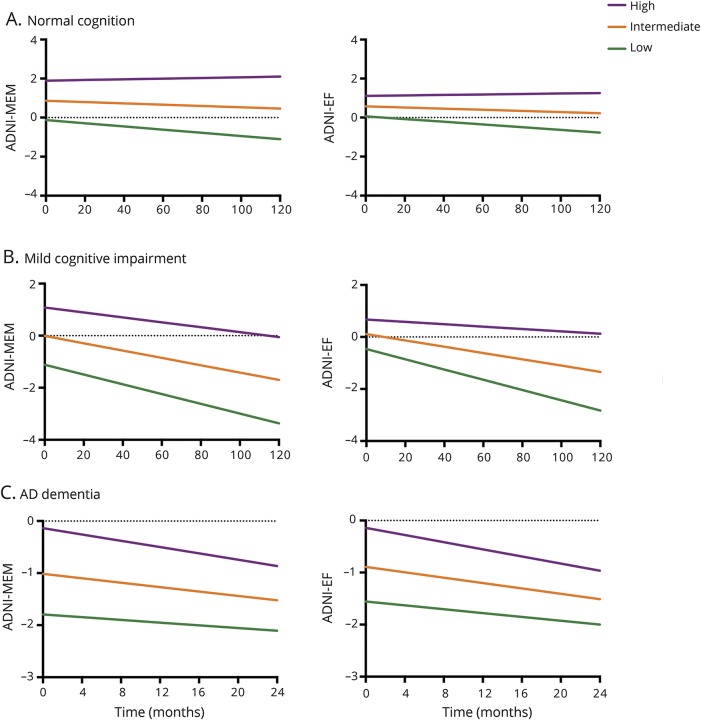Figure 2. Trajectories of memory and executive functions by level of cognitive reserve.
The Y-axis represents estimated marginal means. Cognitive reserve groups were created (for visualization purposes) by calculating tertiles in each disease stage—(A) normal cognition, (B) mild cognitive impairment, and (C) Alzheimer disease (AD) dementia—based on mean gray matter (GM)–based W scores in the temporoparietal mask. The lines displayed correspond to APOE4-positive men with a (disease stage–specific) average age and intracranial volume–adjusted GM volume in the temporoparietal cortex. In the linear mixed models, W scores were included as a continuous variable, and memory and executive functions composite scores were multiplied by 100. Note that the maximum follow-up time for AD dementia participants is shorter (i.e., 24 months) compared to the other 2 groups (i.e., 120 months). ADNI = Alzheimer's Disease Neuroimaging Initiative; ADNI-EF = standardized composite score based on a clock drawing task, animal and vegetable category fluency, the Trail-making task, Digit Span Backwards from the Wechsler Memory Scale–Revised, and the digit–symbol substitution task from the Wechsler Adult Intelligence Test–Revised; ADNI-MEM = standardized composite score based on the Alzheimer’s Disease Assessment Scale–cognitive subscale word list learning task, the Rey Auditory Verbal Learning Test, Logical Memory from the Wechsler Memory Scale–Revised, and the Mini-Mental State Examination recall task.

